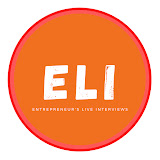Video podcasting is exploding in popularity, and for good reason. Adding a visual element to your podcast opens up new distribution channels, increases engagement, and helps build stronger connections with your audience. But choosing the right camera can make or break your video podcast's production value.
In this comprehensive guide, we've tested and reviewed the best podcast cameras across every budget range. Whether you're just starting out or looking to upgrade your existing setup, we'll help you find the perfect camera for your needs.
Why Video is a Powerful Addition to Your Podcast
Before diving into camera recommendations, let's understand why video podcasting has become essential:
- Multi-Platform Distribution: Upload to YouTube, TikTok, Instagram, and LinkedIn for massive reach
- Higher Engagement: Visual content typically receives 94% more views than text-only content
- Better Monetization: Video podcasts command higher advertising rates and sponsorship deals
- Audience Connection: Facial expressions and body language create deeper emotional connections
- Content Repurposing: Create short clips, social media posts, and highlight reels from longer episodes
What to Look For in a Podcast Camera
Not all cameras are created equal for podcasting. Here are the key features that matter most:
- 4K Resolution: Future-proof your content and ensure crisp quality for all platforms
- Excellent Autofocus: Stay sharp even when you move around during recording
- Flip Screen: Monitor yourself while recording to ensure proper framing
- Good Low-Light Performance: Record in typical indoor lighting without looking grainy
- Clean HDMI Output: Connect to streaming software or external recorders without overlays
- Long Recording Times: Handle full podcast episodes without overheating or stopping
- Microphone Input: Connect external audio for better sound quality
The Best Podcast Cameras in 2025
Logitech Brio 4K
For beginners or those testing the video podcast waters, the Logitech Brio 4K offers exceptional value. This premium webcam delivers genuine 4K recording quality that rivals entry-level cameras at a fraction of the cost.
Pros
- Plug-and-play simplicity
- Excellent 4K image quality
- Great low-light performance
- Multiple field of view options
- Works with all streaming software
- No additional equipment needed
Cons
- Fixed to computer/laptop
- Limited manual controls
- No optical zoom
- Webcam aesthetic limitations
Best For: Solo podcasters, home office setups, beginners wanting to test video podcasting
Check Price on AmazonSony ZV-E10
Designed specifically for content creators, the Sony ZV-E10 hits the sweet spot between professional features and user-friendly operation. It's the camera that most successful video podcasters upgrade to when they're ready to take their production quality seriously.
Pros
- Built for content creators
- Excellent autofocus system
- Beautiful background blur
- Flip screen for self-monitoring
- Great low-light performance
- Interchangeable lenses
- Built-in directional mic
Cons
- No in-body stabilization
- Limited recording time (29 min)
- Need additional accessories
- Learning curve for beginners
Best For: Serious content creators, growing podcasters, those wanting cinematic quality
Check Price on AmazonSony A7 IV
When you're ready to create content that rivals professional television productions, the Sony A7 IV delivers. This full-frame powerhouse is used by top YouTubers, professional podcasters, and content studios worldwide.
Pros
- Professional image quality
- Unlimited recording time
- Exceptional low-light performance
- In-body stabilization
- Dual card slots
- Weather sealing
- Extensive lens ecosystem
Cons
- High price point
- Large and heavy
- Complex menu system
- Requires expensive lenses
- Overkill for many users
Best For: Professional content creators, established podcasters, those monetizing heavily
Check Price on AmazonDon't Forget the Accessories
Your camera is just one part of a complete video podcast setup. Here are the essential accessories you'll need:
Tripod
Stable footage is crucial. Invest in a sturdy tripod that can handle your camera's weight.
Shop TripodsLighting Kit
Good lighting can make a budget camera look professional. LED panels or ring lights work great.
Shop LightingMemory Cards
4K video requires fast, high-capacity cards. Look for V30 rating minimum.
Shop Memory CardsCapture Card
For live streaming or computer recording, a capture card provides clean HDMI input.
Shop Capture CardsQuick Setup Tips for Success
- Eye Level Positioning: Place your camera at eye level to avoid unflattering angles
- Lighting from the Front: Position your light source in front of you, not behind
- Clean Background: Keep your background simple and uncluttered
- Test Everything: Do a test recording to check audio sync and video quality
- Backup Power: Use AC adapters for long recordings to avoid battery death
Which Camera Should You Choose?
Your camera choice depends on your specific needs, budget, and current podcasting stage:
If you're just starting: Begin with the Logitech Brio 4K. It's affordable, simple to use, and produces excellent results for the price.
If you're growing your podcast: The Sony ZV-E10 offers the best balance of professional features and ease of use. It's designed specifically for content creators.
If you're established and monetizing: The Sony A7 IV provides professional-grade results that can compete with any content on major platforms.
Remember, the best camera is the one you'll actually use consistently. Focus on creating great content, and upgrade your equipment as your podcast grows and your needs evolve.
Most importantly, don't let equipment perfectionism stop you from starting. Many successful video podcasters began with basic setups and upgraded over time as their audience and revenue grew.
